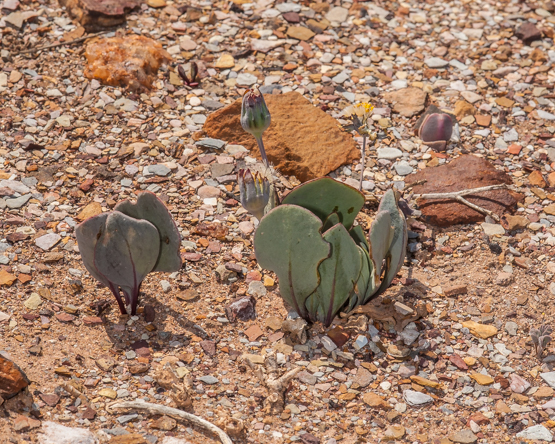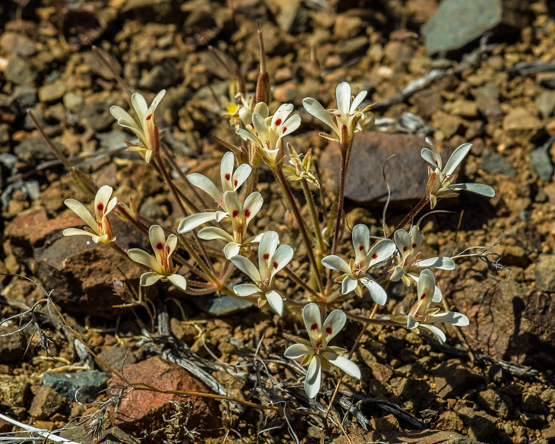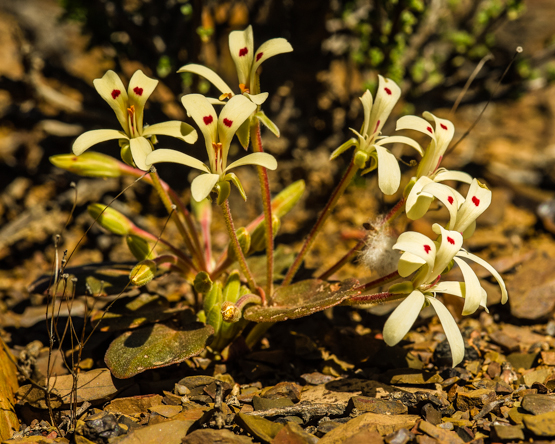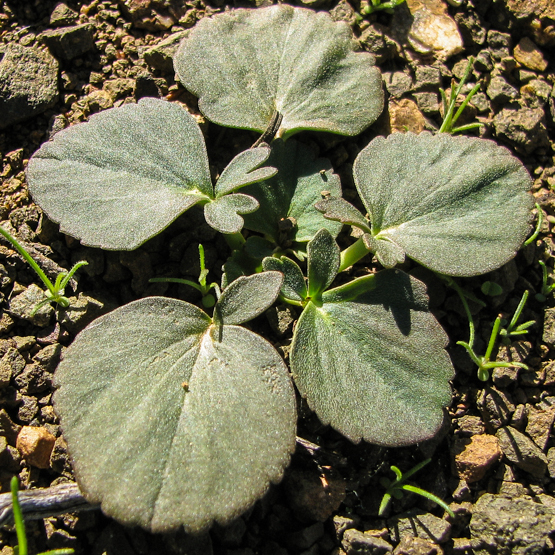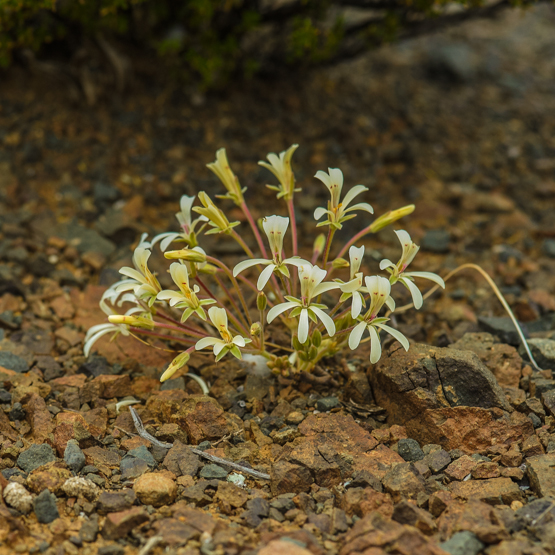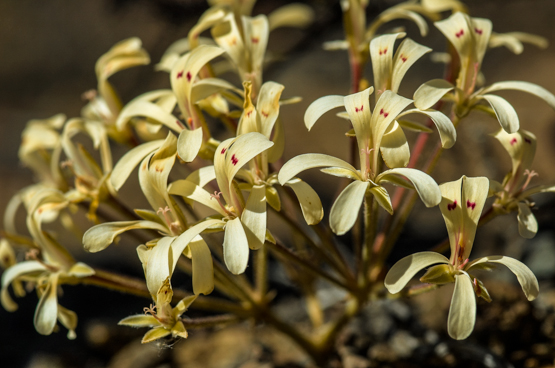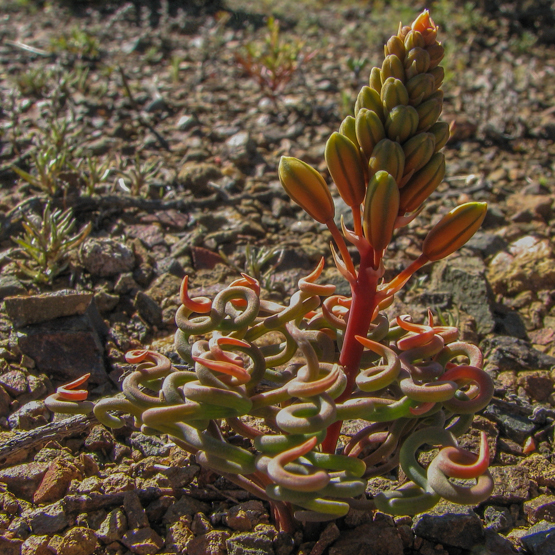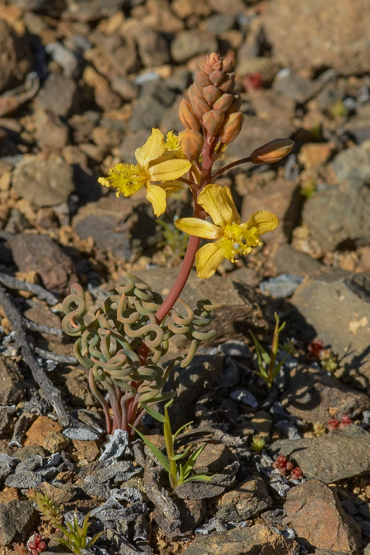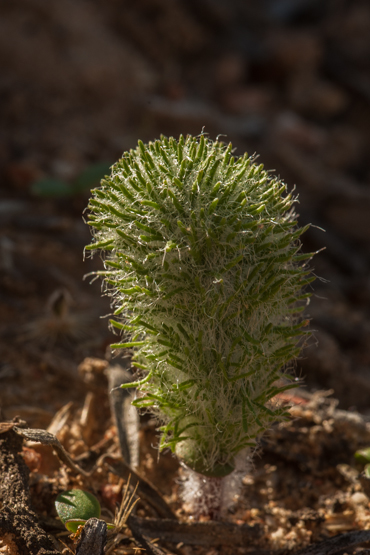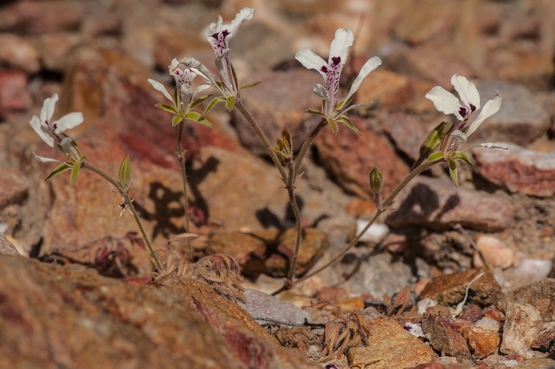About 70 species of Pelargonium belong to the section Hoarea: deciduous geophytes with turnip-shaped or elongated tubers. Several of these plants have similar leaves, so one needs flowers to positively identify them.
P. luteolum possesses a large tuberous rootstock and a number of smaller tubers and
leaves 4-7 cm long and 3-12 cm wide which are dry at flowering.
The inflorescence has 2-3 branches and is up to 20-30 cm tall.
Each of the branches bears to 16 flowers, which are about 1.5 cm in diameter and pale yellow, sometimes pink, with dark red-purple lines on the two upper petals. They usually appear from November-March, but sometimes as late as May.
The plants are widespread in various -usually rocky- habitats from southern Namaqualand to Steytlerville and Mossel Bay. This is mainly a winter rainfall area, with about 100-300 mm rain per year. They seem to be especially plentiful in the Worcester-Montagu area.
The three overlapping lower petals -hiding the style and stamens-are characteristic for this species. The literature tells us that they are arranged in such a way that the lateral ones partly overlap the central one. When you look closely at the last picture, you will see that the arrangement is sometimes the other way round: here the central one of the three lower petals lies on top of the two lateral ones.
The first picture was taken 27 June 2010, the next three 22 Jan. 2016 and the last one 21 Febr. 2009.







